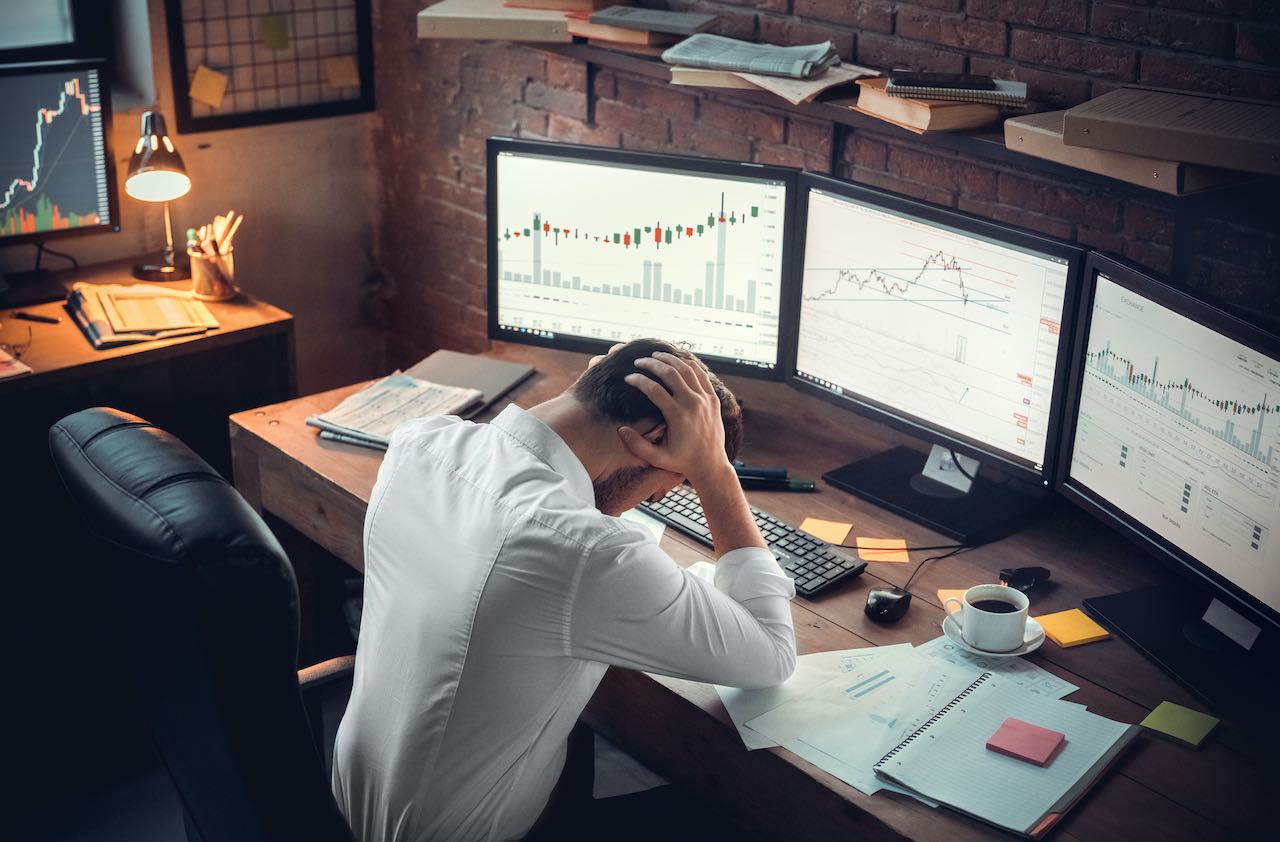Goldberg's Picks for Low-Risk Stock Funds: Forester Value
The third of Steve’s five favorite low-risk stock funds: This hidden gem hates to lose money.

Note: Most investors couldn't care less about beating the market. They want solid returns from funds that will hold up well in awful markets. This is the third of five columns on my favorite low-risk stock funds.
Tom Forester is a belt-and-suspenders investor. Just look at his record. The most Forester Value Fund (symbol FVALX) has ever lost in a calendar year: 5.2% in 2007. That was the fund’s only down year since its inception in 1999. It even squeaked out a 0.4% gain in 2008, when Standard & Poor’s 500-stock index lost 37.0%. For the entire 2007-2009 bear market, the fund shed only 22.7%, compared with the S&P 500’s 55.3% plunge.
Forester Value has proved that slow and steady wins the race. Over the past ten years through September 12, the fund returned an annualized 5.1%. That’s an average of 2.5 percentage points per year better than the S&P 500. In the 2000-2002 bear market, the fund gained 13.8%, compared with the index’s 47.4% decline. Year-to-date through September 12, the fund is down 0.3%, compared with the S&P’s 6.3% decline.

Sign up for Kiplinger’s Free E-Newsletters
Profit and prosper with the best of expert advice on investing, taxes, retirement, personal finance and more - straight to your e-mail.
Profit and prosper with the best of expert advice - straight to your e-mail.
How does Forester do it? First, he’s not afraid to hold cash. His cash stash varies depending on the stock market’s valuation and his views on big-picture risks. Because he’s worried about the U.S. and European economies and “the ability of central banks and governments to do anything about it,” he currently has 20% of his fund’s assets in cash. He sees a 50-50 chance of a new recession. “There’s a fair amount of risk out there,” he says.
Next, he buys puts -- options that give the fund the right, but not the obligation, to sell S&P stock futures at a preset price. They pay off when the market falls. Like his cash levels, Forester’s investments in puts vary. He currently insures about 20% of the fund with puts.
Finally, he buys low-risk stocks. He invests in large, slow-growing companies that sell at low prices relative to their earnings and other key measures. On average, the stocks in his fund sell at 12 times analysts’ anticipated earnings for the coming 12 months. The portfolio also trades at less than one times revenues for the previous 12 months.
Forester fishes in placid waters. One fourth of his holdings are makers of consumer necessities, 18% are in health care and 6% are utilities. These classic defensive sectors account for half of the fund’s stock portfolio.
Forester also favors dividend-paying stocks. On average, his stocks yield 2.7%, according to Morningstar. But because of all of his cash, which yields essentially zero, and because those puts cost money, the fund yields just 0.7% after its 1.25% expense ratio.
Among Forester’s stock holdings: Johnson & Johnson (JNJ), Kimberly-Clark (KMB) and Kroger (KR). No stock is completely safe, but even in a recession, people are still going to buy medicines, tissues and groceries.
Wal-Mart Stores (WMT) is another favorite. “Their customers have already felt the brunt of the recession,” Forester says. At 11 times estimated earnings for the next 12 months, a lot of bad news is already priced into the stock.
Forester also likes some of the beaten-down technology giants, such as Microsoft (MSFT) and Hewlett-Packard (HPQ). Microsoft currently trades at eight times estimated earnings for the next 12 months, while Hewlett, whose stock tanked recently after its management said it wants to get out of the personal-computer business, sells for a mere five times earnings.
Based in a Chicago suburb, Forester, 52, and his three analysts look for the cheapest large-company stocks in every sector. The questions they always ask themselves, Forester says, are “Is this stock beaten up unfairly, or is it just junk? Is it a value trap?”
As with any fund, of course, this one is not without risks. First, it’s almost certain to lag in bull markets. More worrisome, figuring how much to hold in cash and to invest in puts is “more art than science,” as Forester readily admits. Few investors can do it well consistently. But it’s hard to argue with Forester’s long-term results.
Despite the fund’s outstanding record, it holds only $175 million in assets. That should change. This isn’t a fund for everyone, but for cautious investors, it’s a fine pick.
Note: Come back next week for the the fourth installment of a five-column series on my favorite low-risk stock funds. Or sign up for an E-mail alert to be notified of all my new columns as soon as they're available.
Steven T. Goldberg (bio) is an investment adviser in the Washington, D.C. area. He owns shares of Johnson & Johnson. Clients own those two stocks as well as Microsoft.
Get Kiplinger Today newsletter — free
Profit and prosper with the best of Kiplinger's advice on investing, taxes, retirement, personal finance and much more. Delivered daily. Enter your email in the box and click Sign Me Up.

-
 Stock Market Today: Stocks Gain on Tech, Auto Tariff Talk
Stock Market Today: Stocks Gain on Tech, Auto Tariff TalkThe Trump administration said late Friday that it will temporarily halt tariffs on some Chinese tech imports.
By Karee Venema Published
-
 Sam's Club Plans Aggressive Expansion: Discover Its New Locations
Sam's Club Plans Aggressive Expansion: Discover Its New LocationsSam's Club expansion plans will open up to 15 new stores each year. Learn where they plan to open in 2025.
By Sean Jackson Published
-
 ESG Gives Russia the Cold Shoulder, Too
ESG Gives Russia the Cold Shoulder, TooESG MSCI jumped on the Russia dogpile this week, reducing the country's ESG government rating to the lowest possible level.
By Ellen Kennedy Published
-
 Morningstar Fund Ratings Adopt a Stricter Curve
Morningstar Fund Ratings Adopt a Stricter Curveinvesting Morningstar is in the middle of revamping its fund analysts' methodology. Can they beat the indices?
By Steven Goldberg Published
-
 Market Timing: The Importance of Doing Nothing
Market Timing: The Importance of Doing NothingInvestor Psychology Investors, as a whole, actually earn less than the funds that they invest in. Here’s how to avoid that fate.
By Steven Goldberg Published
-
 Commission-Free Trades: A Bad Deal for Investors
Commission-Free Trades: A Bad Deal for Investorsinvesting Four of the biggest online brokers just cut their commissions to $0 per transaction. Be careful, or you could be a big loser.
By Steven Goldberg Published
-
 Vanguard Dividend Growth Reopens. Enter at Will.
Vanguard Dividend Growth Reopens. Enter at Will.investing Why you should consider investing in this terrific fund now.
By Steven Goldberg Published
-
 Health Care Stocks: Buy Them While They're Down
Health Care Stocks: Buy Them While They're Downinvesting Why this sector should outperform for years to come
By Steven Goldberg Published
-
 Buy Marijuana Stocks Now? You'd Have to Be Stoned.
Buy Marijuana Stocks Now? You'd Have to Be Stoned.stocks Don't let your investment dollars go to pot
By Steven Goldberg Published
-
 4 Valuable Lessons From the 10-Year Bull Market
4 Valuable Lessons From the 10-Year Bull MarketInvestor Psychology Anything can happen next, so you must be mentally prepared.
By Steven Goldberg Published